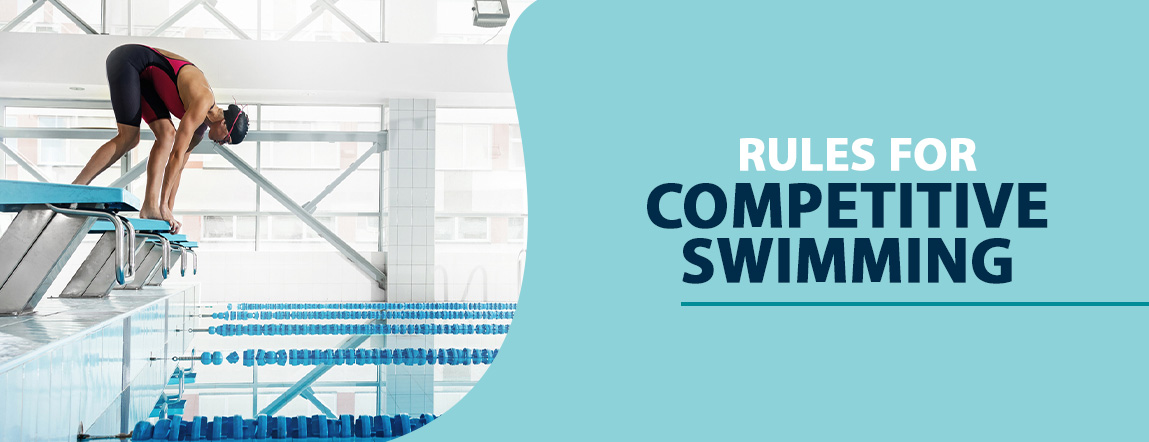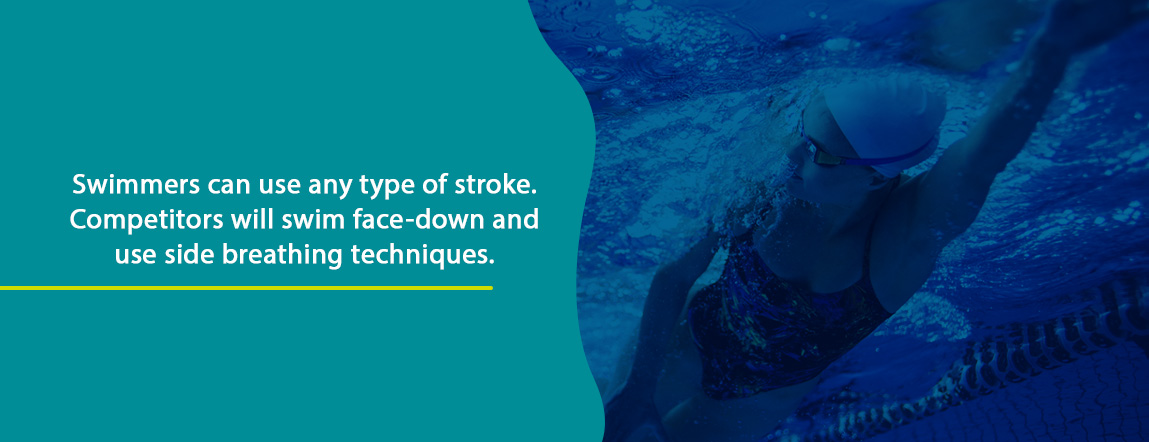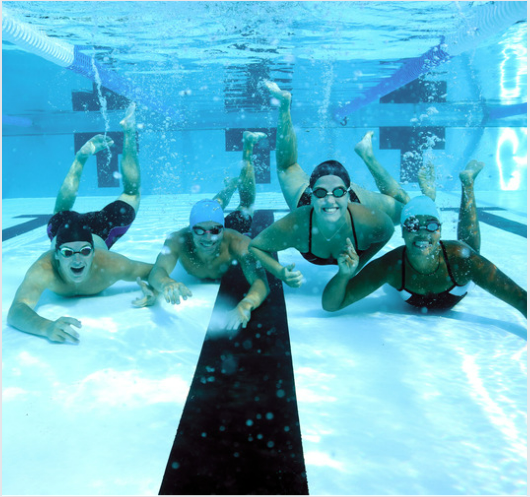Rules for Competitive Swimming

Olympic Swimming, Swim Teams
|
October 25, 2022

Rules for Competitive Swimming
As a competitive swimmer, you know referees will watch you closely as you propel yourself through the water to make sure you are swimming by the rules. You spend hours practicing and perfecting your form every week. While endurance and form are crucial to your performance, you should also understand the latest rules to make sure your practice is taking you in the right direction.Basic Rules of Competitive Swimming
An organization called USA Swimming determines the rules and regulations of competitive swimming in the United States. The organization known as FINA sets the rules for international swimming competitions. Here are some of the basic swimming rules you should understand to help you practice and compete properly to avoid disqualification.1. Starts
The referee begins by signaling competing swimmers with several short whistles. This lets them know it is time to begin the race. Swimmers will remove all clothing except their legal swimwear at this point. The referee then gives a long sound from their whistle to command swimmers to assume their starting positions. This can either be the starting platform, the deck or the water, depending on the race. Once all officials and swimmers are ready for action, the referee signals to the starter with an outstretched hand. This gives the starter control over the swimmers. The starter will tell all swimmers to take their marks, and they will assume their forward-start positions. Specific rules for forward-start positions include:- Swimmers starting outside the water must have at least one foot on the front of the starting platform or deck.
- Swimmers already in the water must continuously contact the starting platform or wall with one hand.
2. False Starts
False starts usually result in a swimmer's disqualification. The following are instances of false starts:- A swimmer starts the race before the signal. Referees can call this before the signal is given or after the race has concluded.
- A swimmer declares to the referee that they will not race. This is considered a false start.
3. Disqualifications
As a competitive swimmer, you compete for the first-place prize. Disqualifications remove any chance at achieving that goal for a given race. Here are acts you should avoid so you can compete legally and strive for the gold:- Committing a false start
- Behaving in an unsportsmanlike or unsafe way
- Grabbing or physically hindering another swimmer
- Entering a pool before another race has been completed
- Dipping your goggles in the pool before a race
- Finishing the race in a different lane than you started
- Grabbing lane dividers
- Standing on the bottom of the pool, except during freestyle races
Rules for Freestyle
Freestyle rules and regulations are the most flexible of the different swimming styles. Swimmers can use any type of stroke. Competitors will swim face-down and use side breathing techniques. Freestyle races begin with a forward-facing dive from a starting block or the side of a pool. The only rules freestyle swimmers must account for are the following:
Freestyle races begin with a forward-facing dive from a starting block or the side of a pool. The only rules freestyle swimmers must account for are the following:
- Freestyle swimmers may not push off the bottom of the pool.
- Freestyle swimmers' bodies must break the water's surface throughout the race.
- Freestyle swimmers' heads must break the surface within 15 meters after a turn.
- Freestyle swimmers must touch the far wall with any part of their body.
- Freestyle swimmers must finish by touching the wall with one hand.
Rules for Breaststroke
The breaststroke begins with a forward start. Swimmers will swim with their bodies on their breasts for the duration of the race, except during turns after a wall touch. Then, they can make any type of turn they want. The breaststroke is reminiscent of a frog swimming through the water and consists of the following:- Stroke: Arm movements must occur simultaneously and stay horizontal. Swimmers push their hands forward from the breast and must not pull them past the hip line. A swimmer's head must break the water for every stroke.
- Kick: Swimmers can perform a single butterfly kick at the start and after each turn. Otherwise, both legs must kick simultaneously and on the same horizontal plane. Feet must turn outwards during propulsion.
- Finish: Both hands must touch simultaneously at any position under or above the water.
Rules for Backstroke
The backstroke is unique as swimmers start in the water with their backs turned to the direction they will be swimming. Their hands must grip the edge of their launching point, and after pushing off, they must remain on their backs for the entirety of the race. Backstroke rules and regulations are lenient, with some swimmers calling the backstroke the "upside-down freestyle." Swimmers use alternating strokes and kicks throughout the race as long as part of the body consistently breaks the water's surface. They must stay on their back for the entirety of the race to avoid disqualification. Some turns allow the shoulders to move vertically, but once the turn is complete, they must resume their position. To finish, swimmers must touch the wall while still on their backs.Rules for Butterfly
The butterfly begins with a forward-facing dive. In addition to any kind of turn, the swimmer will perform the following:- Stroke: Swimmers must bring their arms forward over the water and pull them back under the water simultaneously. The head should consistently break the water's surface for breaths. Shoulders should be at or past the vertical position toward the breast.
- Kick: Using a dolphin kick, feet and legs must move simultaneously in an up and down motion.
- Finish: The swimmer must make the touch with both hands simultaneously at any position under or above the water.
Rules for Medley
Medleys or individual medleys are races in which swimmers use each type of stroke for one-fourth of the total distance of the race. Swimmers must abide by the specific rules for each type of stroke during that portion of the race. For instance, if a swimmer obeys the rules for freestyle, breaststroke and butterfly during those portions of the race, but turns from their back during the backstroke, they will be disqualified. Medley races demand the following:- Swimmers must start with a front-facing dive.
- Swimmers must use the different strokes in this order: butterfly, backstroke, breaststroke then freestyle.
Rules for Relays
Relays involve four swimmers competing as a team. In a freestyle relay, all swimmers will swim however they choose. In a medley relay, each swimmer will swim their section of the race using the proper form for that portion. Freestyle relays begin with a forward-facing dive. Medley relays begin in the backstroke position and proceed in the following order: backstroke, breaststroke, butterfly then freestyle. Swimmers must wait to launch until their teammate touches the wall.Get Ready for Your Next Race With Kiefer Aquatics
At Kiefer, customer satisfaction is our top priority. We offer swimwear for women as well as for male swimmers. We also offer a range of gear to help you prepare for and excel in your next competition. With our low price guarantee and no-hassle returns, we're sure you'll have a satisfactory online shopping experience. Browse our products today, or contact us for more information about items for your next swimming competition.







Leave a Comment
Your email address will not be published. Required fields are marked *